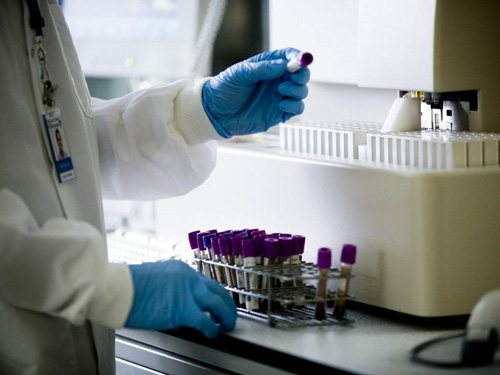A new study suggests that the protein soluble urokinase plasminogen activator receptor (suPAR) may help scientists predict who is likely to develop more severe Covid-19.
The research, published as a research letter in the journal Critical Care, may help clinicians identify people who are more likely to need intensive care support. It may also help them identify those who can safely manage the disease at home.
The sudden emergence and rapid spread of SARS-CoV-2, the virus that causes Covid-19, has put health services across the world at risk of being overwhelmed.
Patients who develop a severe infection of Covid-19 will often experience forms of respiratory failure, which, in turn, puts pressure on intensive care units (ICU).
Easing this pressure has been central to the responses of different governments. This has become known as “flattening the curve.” If too many people require intensive care treatment in too short a time, ICUs might become overwhelmed and unable to care for all patients.
If they can identify effective ways of predicting disease severity, then people who are likely to need intensive care support can stay in the hospital and potentially start receiving treatment.
Conversely, doctors can send those who are not likely to develop a severe case of the disease home. These people can then manage the disease through self-care, which will relieve pressure on ICUs.
3-DRUG COMBO TREATMENT MAY BE SUCCESSFUL: This three-drug combination also shortens the duration of viral shedding — that is, the period during which the virus is detectable in a person’s body and transmissible to others.
The results of the new multicenter, prospective, open-label, randomized trial now appear in the journal The Lancet.
The researchers recruited 127 participants between February 10 and March 20, 2020. These participants came from six hospitals in Hong Kong, China, where doctors had tested them for SARS-CoV-2 and obtained positive results. On average, 5 days passed between the onset of symptoms and the start of treatment with the drug combination.
The team randomly assigned 86 of the participants to a group that received the combination and 41 of the participants to a control group.
In the combination group, participants took a combination of “lopinavir 400 [milligrams (mg)] and ritonavir 100 mg every 12 [hours], ribavirin 400 mg every 12 [hours], and three doses of 8 million international units of interferon beta-1b on alternate days.” The treatment lasted for 14 days.










